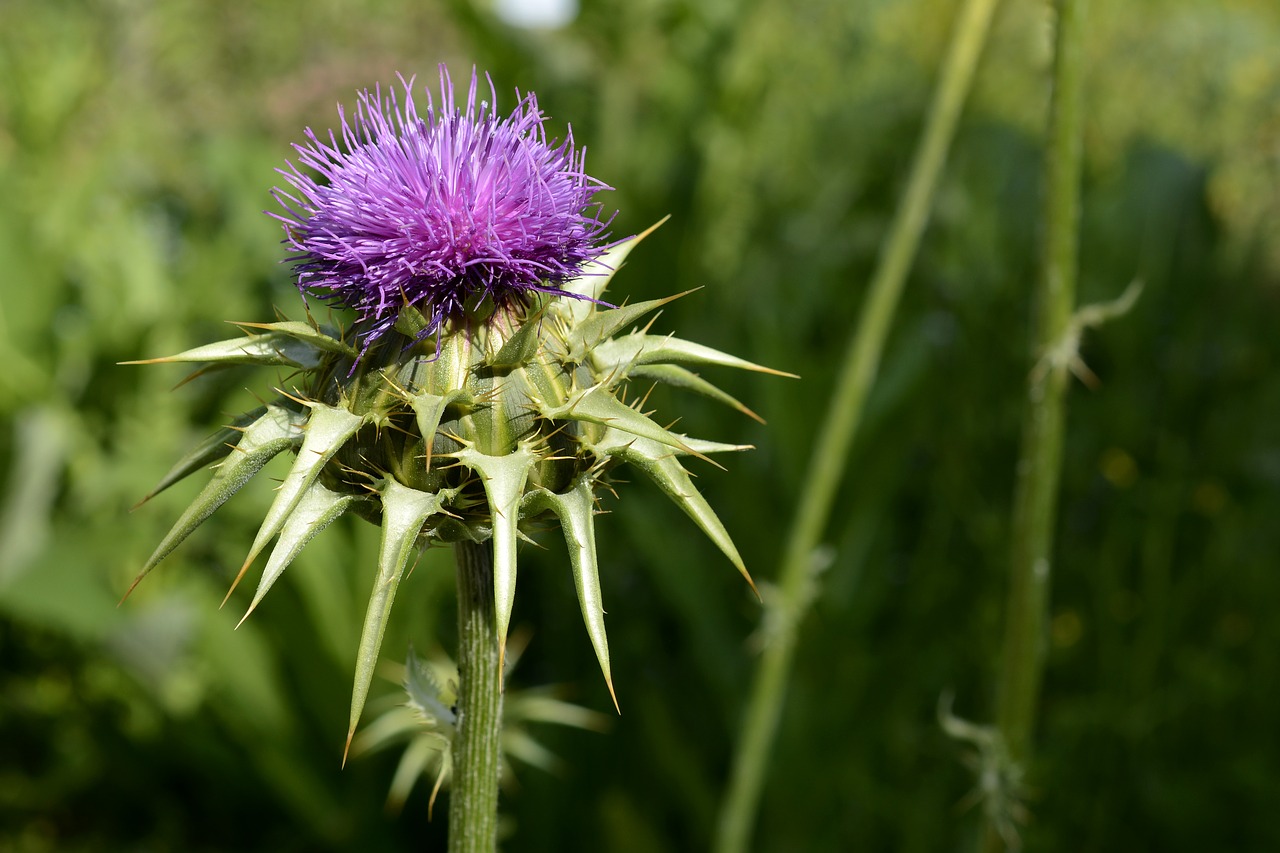Common Names: milk thistle, Mary thistle, holy thistle.
Background
- Milk thistle is native to southern Europe, southern Russia, Asia Minor, and northern Africa. It also grows in North and South America and South Australia.
- Silymarin is considered to be the main component of milk thistle seeds, but the terms “milk thistle” and “silymarin” often are used interchangeably.
- Historically, people have used milk thistle for liver disorders, such as hepatitis and cirrhosis, and gallbladder problems.
- Silymarin is the most commonly used herbal supplement in the United States for liver problems.
- Milk thistle products are available as capsules, powders, and extracts.
How Much Do We Know?
- We know little about whether milk thistle is effective in people, as only a few well-designed clinical studies have been conducted.
What Have We Learned?
- Results from clinical trials of milk thistle for liver diseases have been mixed, and two rigorously designed studies found no benefit.
- The 2008 Hepatitis C Antiviral Long-Term Treatment Against Cirrhosis (HALT-C) study, sponsored by the National Institutes of Health (NIH), found that hepatitis C patients who used silymarin had fewer and milder symptoms of liver disease and somewhat better quality of life but no change in virus activity or liver inflammation.
- A 2012 clinical trial, cofunded by the National Center for Complementary and Integrative Health (NCCIH) and the National Institute of Diabetes and Digestive and Kidney Diseases, showed that two higher-than-usual doses of silymarin were no better than placebo for chronic hepatitis C in people who had not responded to standard antiviral treatment.
- Results from a 2013 clinical study suggest that milk thistle may enhance standard treatment in young people with a particular form of anemia (Cooley’s anemia).
What Do We Know About Safety?
- In clinical trials, milk thistle appears to be well tolerated in recommended doses. Occasionally, people report various gastrointestinal side effects.
- Milk thistle may produce allergic reactions, which tend to be more common among people who are allergic to plants in the same family (for example, ragweed, chrysanthemum, marigold, and daisy).
- Compounds in milk thistle may lower blood sugar levels in people with type 2 diabetes. People with diabetes should use caution.
Keep in Mind
- Tell all your health care providers about any complementary or integrative health approaches you use. Give them a full picture of what you do to manage your health. This will help ensure coordinated and safe care.
For More Information
NCCIH Clearinghouse
The NCCIH Clearinghouse provides information on NCCIH and complementary and integrative health approaches, including publications and searches of Federal databases of scientific and medical literature. The Clearinghouse does not provide medical advice, treatment recommendations, or referrals to practitioners.
PubMed®
A service of the National Library of Medicine, PubMed® contains publication information and (in most cases) brief summaries of articles from scientific and medical journals. For guidance from NCCIH on using PubMed, see How To Find Information About Complementary Health Approaches on PubMed.
Office of Dietary Supplements (ODS), National Institutes of Health (NIH)
ODS seeks to strengthen knowledge and understanding of dietary supplements by evaluating scientific information, supporting research, sharing research results, and educating the public. Its resources include publications (such as Dietary Supplements: What You Need to Know), fact sheets on a variety of specific supplement ingredients and products (such as vitamin D and multivitamin/mineral supplements), and the PubMed Dietary Supplement Subset
Key References
- Abenavoli L, Capasso R, Milic N, et al. Milk thistle in liver diseases: past, present, future. Phytotherapy Research. 2010;24(10):1423-1432.
- Fried MW, Navarro VJ, Afdhal N, et al. Effect of silymarin (milk thistle) on liver disease in patients with chronic hepatitis C unsuccessfully treated with interferon therapy: a randomized, controlled trial. JAMA. 2012;308(3):274-282.
- Loguercio C, Festi D. Silybin and the liver: from basic research to clinical practice. World Journal of Gastroenterology. 2011;17(18):2288-2301.
- Milk Thistle. Natural Medicines Web site. Accessed at naturalmedicines.therapeuticresearch.com on April 8, 2015. [Database subscription].
- Moayedi B, Gharagozloo M, Esmaeil N, et al. A randomized double-blind, placebo-controlled study of therapeutic effects of silymarin in ß-thalassemia major patients receiving desferrioxamine. European Journal of Haematology. 2013;90(3):202-209.
- Polyak SJ, Oberlies NH, Pécheur E-I, et al. Silymarin for HCV infection. Antiviral Therapy. 2013;18(2):141-147.
- Seeff LB, Curto TM, Szabo G, et al. Herbal product use by persons enrolled in the Hepatitis C Antiviral Long-Term Treatment Against Cirrhosis (HALT-C) trial. Hepatology. 2008;47(2):605-612.
This publication is not copyrighted and is in the public domain. Duplication is encouraged.










+ There are no comments
Add yours